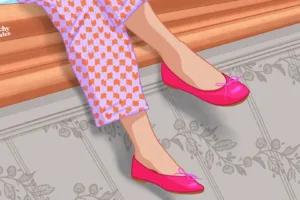Put Those Shades On: How To Choose The Right Sunglasses
Who could ever forget Jackie O. with her elegant, dark, oversized lenses? Or Diana Ross with those small, round, hippie-styled glasses? You can really spice up your summer outfit with a cool pair of shades. Choosing the right colour, shape and size to match your clothes and accessories can help you make a fashion statement, as some of the most iconic looks were crowned by chic and colourful as well as big and bold sunglasses. But there is much more to them than just the looks. They can protect you from serious diseases like cataract and eye sunburn. Squinting your eyes and not protecting eyelids and the delicate, thin skin around the eyes can also be detrimental and escalate the formation of wrinkles. So CrunchyTales put together some suggestions for selecting the perfect pair for this summer.
Protect your eyes from damage
According to the American Academy of Ophthalmology (AAO), long-term exposure to the sun without proper protection can increase the risk of eye diseases, including cataract, macular degeneration, growths on the eye, and even a rare form of eye cancer. Sunglasses should be worn whenever in the sun, year-round, as even short-term exposure can damage the eyes. The sun’s rays are strongest between 10 am and 2 pm, but that’s not the only time UV rays can harm your eyes.
Shades are particularly important when spending time near water and snow, as the sun reflecting off water and snow can cause a painful sunburn – photokeratitis – on the front part of the eye. Photokeratitis manifests itself through redness, blurry vision, sensitivity to bright light, and in rare cases, even temporary vision loss. Therefore, protecting your own eyes as well as those of your children is hugely important.
The most important factors when choosing a pair
The principle of sunglasses is said to date back to prehistoric Inuits who donned flattened walrus ivory snow goggles with narrow slits to protect their eyes from snow blindness. Yet one of the true pioneers is considered to be British James Ayscough, who in the late 1700s recommended that reading glasses be tinted blue or green to correct vision impairments. In 1913 crooked lenses made from glass containing cerium were introduced, and in 1936 Edwin Land started experimenting with polaroid filters.
Today, there is an abundance of choice in size, shape, colour and price. Ranging from classics such as Ray-Ban Wayfarers or pilots to flamboyant and adventurous glasses by fashion houses like Moschino, Prada, Gucci or MaxMara, we are truly spoiled for choice. Entering an optical shop might even seem daunting. So where to start?
According to AAO, when choosing sunglasses, you should consider these factors:
- UVA/B radiation. The single most important thing to look for when buying sunglasses is a sticker or tag indicating that they block 99 to 100 per cent of both UVA and UVB radiation.
- Buy oversized. The more coverage from sunglasses, the less sun damage inflicted on the eyes. Consider buying oversized glasses or wraparound-style glasses, which help cut down on UV entering the eye from the side. Big glasses also protect the delicate and thin skin around our eyes, thus preventing the formation of wrinkles.
- Don’t be fooled by the colour. While very dark lenses may look cool, they do not necessarily block more UV rays. Each colour, even the lighter ones, has its special benefits and effects.
- Consider your outdoor sports. Some sunglasses come with amber, green or grey lenses. They do not block more sun but can increase contrast, which may be useful for athletes who play sports such as baseball or golf.
- Consider polarized lenses. Polarization reduces glare coming off reflective surfaces like water or pavement. This does not offer more protection from the sun but can make activities like driving or being on the water safer or more enjoyable.
- Don’t break the bank! Sunglasses don’t have to cost a lot of money to provide adequate eye protection. Less expensive pairs marked as 100 per cent UV-blocking can be just as effective as pricier options.
Cat-eyed, butterfly, square or round?
Sophia Loren, Marilyn Monroe and Grace Kelly were all fashion icons of their time and used sunglasses as an essential part of their stylish outfits. In fact, those classic shapes are still a fad, after over half a decade these dashing women donned them. Each had their favourite shapes and knew how to bring out the best of their looks by choosing the perfect format.
How to go about choosing the right shape for you? If you buy glasses at an optics, the professional staff will certainly be able to help out. But keep in mind that contrast is key, as round glasses look better on a squared face and vice versa, an oval or round face-shape is best matched with squared or rectangular glasses.
Cat-eye glasses definitely attract the attention to the upper part of the face, granting an instant lifting effect. Audrey Hepburn was one of the iconic cat-eyed lenses wearers. Pilot shaped glasses are a classic that was designed for the US Air Force by RayBan but have been copied by several other design houses and adopted by men and women alike around the world. Model Heidi Klum has made them her trademark. Round glasses suit angular faces and are perfect to give a bohemian look, especially if tinted with a pinkish or yellowish tone, like the ones John Lennon and Yoko Ono wore back in the seventies. Squared and rectangular glasses are perfect for a round or heart-shaped face.
Picking the lens colour
There is also a vast range of lens colours and each has its particular benefits. Brown lenses improve depth perception and are perfect for sports and activities like golfing, racing and driving where distance needs to be considered. Green lenses, on the other hand, are great for water or field sports, cycling or skiing as they accentuate shadows. Yellow lenses provide greater clarity, perfect for target shooters and pilots whereas blue tint enhances the contours around objects and improves colour perception.
Having several pairs of glasses – even cheaper ones, just keep in mind the tag for UVA/UVB protection – allows you to keep a pair always at hand: one in the car, another one in your purse and a third pair near the pool or the garden table. This summer, be courageous and experiment with different styles and shapes. Remember, playful women never get old!





